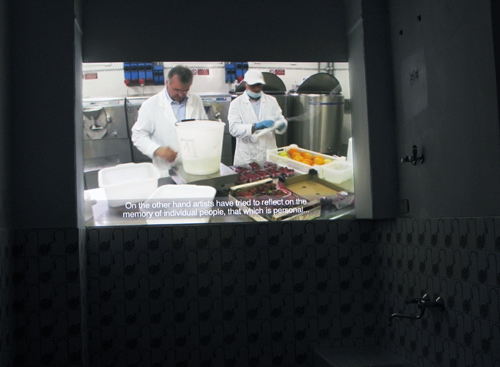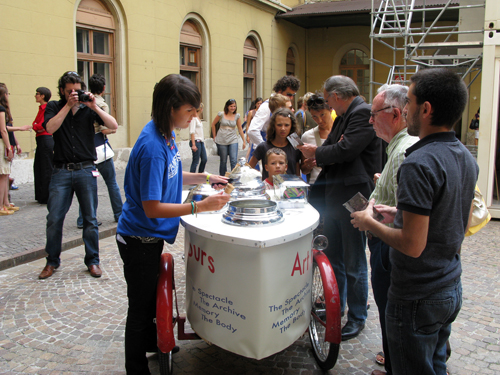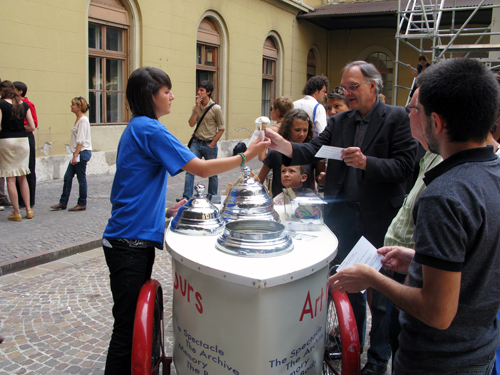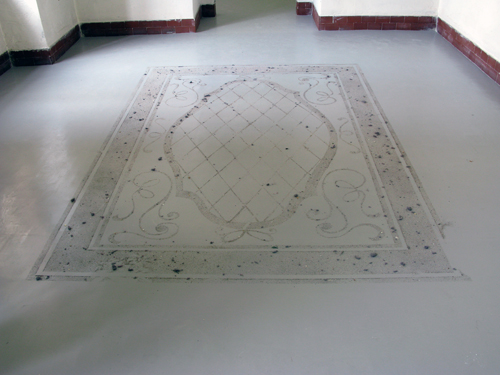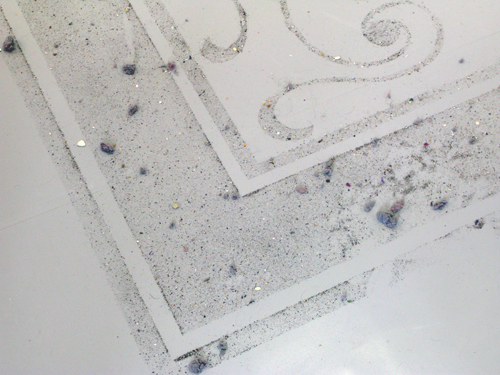In Vienna to talk with Fumiyo Ikeda about the solo for her which we will collaborate on next year. Before I arrive she sends me these notes on improvisation.
These are my personal notes about improvisation.
They are very short. I want it to be short sentences.
While improvising it’s too late to think what am I doing ?
While improvising it’s too late to think how will I do it?
Improvisation is now and here. Me and communication.
Consciousness/unconsciousness
Accepting the situation
Getting into the momentum
No judgment
No comment
No evaluation
Addition/Subtraction
Selection/Elimination
Anything is possible
Let it come
Let it go
I first saw Fumiyo dance more than twenty years ago, in Anne Teresa De Keersmaeker‘s Rosas Dans Rosas. I must have seen her dance many times since then, most recently in Nine Finger with artist/performer Benjamin Verdonck, which they made with Alain Platel. Fumiyo always looks like she’s thinking about what she’s doing, as if the movement she makes is under some kind of scrutiny or consideration – consideration not shown on the face, more by the body. More than anything else her movement seems constantly weighed, as if there is some sub-micro-second (or unquantifiable attention-split) of contemplation involved in even the fastest move. Not all dancers give that impression but with Fumiyo it’s very strong. For me it means that what happens counts. What’s amazing too is how fast she picks up and drops a particular energy in her movement – so the tone of what she’s doing can seem extremely fluid, changeable, unstable – light one moment, harsh or difficult another, with barely a boundary between the two. I’m compelled by this – as I am watching the other dancers I’ve been lucky enough to work with, Meg Stuart, Wendy Houston for example – even as I’m still very unsure what Fumiyo and I will make together. There is time for that still.
I found the new piece of Anne Teresa – Zeitung – very strong. The structure is deeply fragile – deploying the nine dancers in small groups for duets that turn into solos, trios that turn into duets – an unfolding, dissolving, endlessly adjusting and re-forming use of the stage, which only later pulls out the stops for some large-group set-pieces or more dynamic and exhausting improvisations. Even there though the piece resists the easy climax very often, many times choosing to dissipate an energy rather than take it to the max, shifting focus from one performer to another or one mode to another, where continuing would evidently make better, or at least more evidently functional drama. The piece is all so much the better for this fragility though even if it gives a hard time to anyone looking for an easy ride and even though I’d struggle to explain why. It’s more than my perversity speaking here I’m sure. There’s something very simple going on (not that I can name it), as well as a shifting between different kinds of intimacy, dramatic interaction, bodily distortion and, in a certain way, grace.
Throughout much of the piece Anne Teresa also lets the music and the lights take their own independent tracks – working with and for the choreography but also at many junctures seeming to ignore it, keeping it off balance. Ghosts or spirits that haunt the dance but do not serve it always, the lights (done, along with the stage design by Discordia’s Jan Joris Lamers) are prone to changing apparently at random, moving from one to another of the set number of lighting states during scenes, throwing what begins as a stark or simple scene into sudden backlight or total darkness, or creating huge space suddenly around an image that was previously isolated or framed by light. The music for its part quite often arrives during sequences that have already begun, or at other times the action endures apparently unchanged once the music has ended, suddenly exposed, continuing in silence. You have the impression I guess of things being slightly out-of-sync, displaced, misplaced but without any kind of melodrama being created out of this condition. What seems key too is that these tactics aren’t deployed to make a mess either – there’s no flaunting of dysfunction. In fact the structure remains extremely careful, slow-burning, without appearing to be going anywhere much and persists in this way, nontheless creating a space, place, mode in which small interactions or events in the choreography start to count over and above their real weight. There’s a kind of self-effacement in the work too – each of the dancers gets their moment, or shines in some particular interaction or sequence, but no one’s lifted far out of the group which remains in some senses human and straightforward (watching each other, working, waiting) but at the same time slightly austere, blank, sparse and aesthetic in the ways that you might expect from a Rosas piece. Perhaps the closest thing to a through-line is the presence of Alain Franco – seated at the piano to play the Bach pieces which are the spine of the work, and controlling the introduction of the recorded versions of Weburn and Schoenberg that provide the rest of the music. It’s certainly matters that the first Bach track is played by him alone on the expanse of the stage area, with both dancers and audience in effect waiting – it’s an act of contemplation, private as well as public, that sets the tone for much of what will follow – simplicity and focus. Later in the evening Franco rises from his place at the piano – abandoning it during one sequence so that he can slump in an arm chair, and for another wandering into the depth of the space, behind the playing area – a man, who, drained from his own playing and having set the final recording in motion seems to have no further task left.

